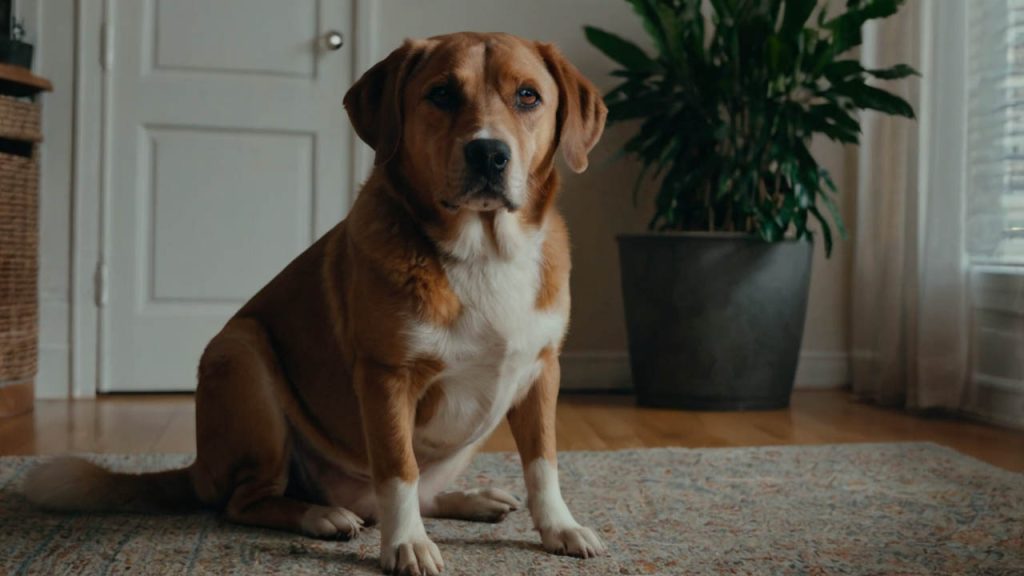The Ultimate Guide: How to Tell if Your Dog is Pregnant at Home
The story often begins with a nagging suspicion. Your unspayed female dog has finished her heat cycle, and now, a few weeks later, you start to notice subtle shifts. She seems a bit sleepier than usual, or perhaps she’s suddenly become your shadow, following you from room to room. These quiet changes can spark an urgent question in a dog owner’s mind: How to tell if your dog is pregnant at home? While a definitive answer can only come from a veterinarian, there is a story your dog’s body and behavior will tell, and learning to read the signs is the first crucial step.
This comprehensive guide will tell the complete story of how to identify a potential canine pregnancy through at-home observation. We will begin by exploring the earliest, most subtle behavioral clues that you might notice. Subsequently, we will detail the more concrete physical changes that appear as the pregnancy progresses. Furthermore, we will explain why a veterinary visit is a non-negotiable next step for confirmation and care. Consequently, you will be empowered with a clear, week-by-week checklist for how to tell if your dog is pregnant at home, allowing you to act quickly and responsibly for the health of your dog and her potential litter.
Why You Must Know How to Tell if Your Dog is Pregnant at Home
Before we dive into the signs, it’s vital to understand that a dog’s gestation period is very short—only about 63 days. This gives you a very limited window to prepare. Identifying a potential pregnancy early on is critical because a pregnant dog requires:
- Specialized nutrition to support her health and the puppies’ development.
- A plan for a safe and clean whelping (birthing) area.
- Veterinary supervision to monitor for any potential complications.
Therefore, learning how to tell if your dog is pregnant at home is the essential first chapter in ensuring a safe and healthy outcome for everyone.

The Early Chapters: Behavioral Signs of a Pregnant Dog (Weeks 1-4)
The story of a dog pregnancy often starts with subtle shifts in personality and routine. These are the earliest clues you can observe at home.
Optimizing Your Observation of Changes in Energy Levels
One of the very first signs many owners notice is a decrease in energy, often referred to as lethargy. Your normally playful and energetic dog might seem more tired, preferring to nap on the couch rather than engage in a vigorous game of fetch. This is due to the significant hormonal changes happening in her body.
Identifying a Shift in Appetite
Appetite changes are another common early indicator. This can go one of two ways.
- Decreased Appetite: Some dogs may experience a form of “morning sickness” in the first few weeks (around week 3), leading them to be pickier with their food or eat less.
- Increased Appetite: Conversely, as the pregnancy progresses, her nutritional needs will increase, and you may notice she is hungrier than usual.
Noticing Changes in Affection and Behavior
A pregnant dog’s personality can change noticeably. A dog that is usually independent might become incredibly clingy and affectionate, seeking constant reassurance. On the other hand, a normally social dog might become more solitary and irritable, wanting to be left alone. This change is a key part of how to tell if your dog is pregnant at home.

The Middle Chapters: Physical Signs of a Pregnant Dog (Weeks 4-6)
This is the point in the story where the physical evidence becomes much more apparent and reliable.
The Most Reliable At-Home Sign: Nipple Changes
This is often the first unmistakable physical clue you can spot.
- What to Look For: A pregnant dog’s nipples will begin to swell, becoming larger, more prominent, and often changing to a darker, rosier pink color. The area around the nipples will also become more pronounced. This typically starts around day 25-30. This is a very reliable method for how to tell if your dog is pregnant at home.
Observing Weight Gain and Abdominal Enlargement
Around the one-month mark, you will begin to see clear signs of weight gain.
- What to Look For: Her waist will start to thicken, and her abdomen will feel firmer and begin to swell. This will become progressively more obvious as the puppies grow.
A Clear Vaginal Discharge
Around week 4 or 5, you may notice a thin, clear, or slightly mucoid discharge from your dog’s vulva. This is a normal part of pregnancy. Note: If the discharge is bloody, has a bad odor, or is pus-like, contact your veterinarian immediately, as this can be a sign of an infection.
The Final Chapters: Late-Stage Signs (Weeks 7-9)
In the final third of the pregnancy, the signs are impossible to miss.
- Visible Puppy Movement: As you watch your dog rest, you will likely be able to see the puppies moving and kicking in her abdomen. You may also be able to feel them gently.
- Strong Nesting Behavior: In the week leading up to the birth, your dog will enter the “nesting” phase. She will begin to seek out a quiet, secluded, and safe place to have her puppies. She may start shredding blankets, digging in her bed, or trying to hide in closets.
The Most Important Part of the Story: Veterinary Confirmation
While learning how to tell if your dog is pregnant at home is a great first step, you cannot be 100% certain without a trip to the veterinarian.
- Why It’s Crucial: Your vet can confirm the pregnancy, rule out a false pregnancy (pseudocyesis), give you an estimated due date, and, most importantly, provide a puppy count via a late-stage X-ray. Knowing how many puppies to expect is critical for a safe delivery.
- Definitive Tests: Your vet can use an ultrasound (from day 25), a hormone test, or an X-ray (after day 45) for definitive confirmation.
The American Kennel Club (AKC) provides an excellent, detailed timeline of what to expect during a dog’s pregnancy.
Your Dog’s Story is in Your Hands
The story of a potential pregnancy is one that requires you to be a careful and responsible observer. By learning how to tell if your dog is pregnant at home, you can identify the early signs and take the crucial next step of seeking professional veterinary care. This proactive approach is the key to ensuring the story has a happy and healthy ending for your beloved dog and her new arrivals.
Have you ever had a pregnant dog? What was the very first sign that made you suspicious? Share your experiences in the comments below! For more on preparing for the big event, be sure to read our guide on [How to Prepare a Whelping Box for Your Dog].


